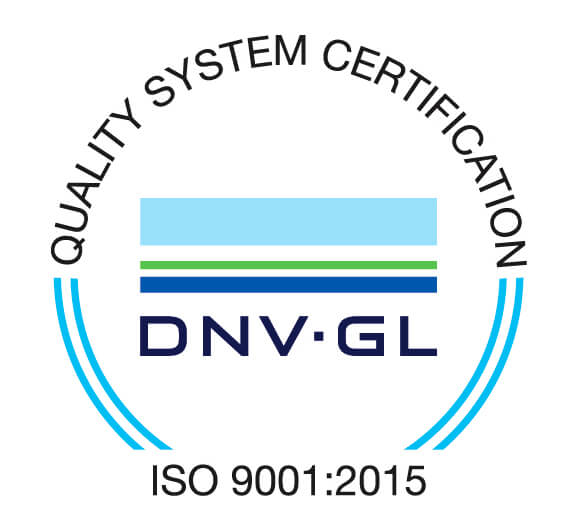You might have experienced a near-miss situation at work and dismissed it as unimportant. While it may not seem significant at first glance, failing to report near misses is one of the most ineffective ways to handle such occurrences. Ignoring near misses can lead to substantial risks and hazards. These incidents deserve the same level of attention as actual accidents, as reporting them can help avert future issues.
Near misses often highlight underlying safety concerns in the workplace. Reporting every near miss is essential to ensure workplace safety and avoid penalties from organizations like OSHA. According to the National Safety Council (NSC), approximately 75% of workplace accidents are preceded by at least one near-miss event.
This article presents 30 examples of near-miss incidents to emphasize the importance of reporting them and to aid in recognizing such occurrences.
Table of Contents
ToggleWhat Is a Near Miss?
A “Near Miss” in workplace safety refers to an unplanned event that did not result in injury, illness, or damage but had the potential to cause harm. These incidents can range from minor issues, like slipping on a wet floor without falling, to significant events, such as machinery malfunctioning in a way that could have caused serious injury.
Near misses act as warnings for potential dangers and provide an opportunity for organizations to address risks proactively. They are crucial in maintaining a safe, accident-free workplace.
Why Report Near Misses?
Reporting near misses is a vital aspect of effective workplace safety management. It enables organizations to identify hazards, prevent accidents, and promote a culture of safety. Here are five key reasons to report near misses:
Early Risk Identification
Reporting near misses provides valuable insights into potential risks. This information is instrumental in addressing hazards before they lead to actual accidents.
Preventing Serious Incidents
Near misses often signal the potential for more severe accidents. By analyzing and responding to these events, organizations can implement measures to prevent a minor incident from becoming a major disaster.
Fostering a Safety Culture
Regular reporting of near misses encourages a safety-first mindset across the organization. It motivates employees to stay vigilant and prioritize their own safety and that of their colleagues.
Regulatory Compliance
Near-miss reporting is often a legal requirement and a best practice in safety management. Keeping detailed records helps organizations comply with local, state, and federal safety regulations.
Continuous Improvement
Tracking and analyzing near misses allows organizations to refine safety protocols and address gaps in their safety measures, promoting an environment of ongoing improvement.
Consequences of Not Reporting Near Misses
Failing to report near misses can lead to severe repercussions for individuals and organizations. OSHA outlines several risks associated with not addressing these incidents. Here are five key consequences:
Increased Accident Risk
Without addressing near misses, the likelihood of serious accidents increases significantly. These incidents serve as warnings and should prompt preventative action.
Safety Violations and Penalties
Not documenting near misses can lead to safety violations and result in substantial fines and penalties from regulatory bodies such as OSHA. Employers are required by law to maintain thorough records of all safety incidents.
Reputational Damage
Companies that fail to report and address near misses may suffer reputational harm. This can affect their ability to attract business, retain employees, and avoid legal action.
Lower Employee Morale
Ignoring near misses may cause employees to feel that their safety concerns are not valued, resulting in lower morale, decreased productivity, and higher turnover rates.
Higher Insurance Costs
Companies with unreported near misses may face increased insurance premiums. Insurers assess safety records when setting rates, and a lack of reporting can result in higher costs.
30 Near Miss Examples
Understanding what qualifies as a near miss is essential to recognizing and reporting these incidents. Below are 30 near miss examples of the common workplace:
Slips, Trips, and Falls
- A worker slips on a wet surface but avoids falling.
- An employee trips over loose cables without falling.
- A staff member catches the handrail to avoid falling down stairs.
- A worker steps over an uncleaned spill.
- An employee nearly trips over tools left on a walkway.
Risky Behavior and Horseplay
- Tools are thrown to another employee but narrowly avoid causing harm.
- Workers race forklifts and stop just before colliding.
- An employee uses a chair instead of a ladder without falling.
- Staff distracts a machine operator without causing an accident.
- A worker neglects PPE but avoids injury.
Narrow Escapes
- An appliance is unplugged without switching it off, avoiding electrocution.
- A falling object narrowly misses an employee.
- A worker pulls their hand away from machinery just in time.
- Staff narrowly avoids a collision while carrying heavy items.
- Workers evacuate before a structure collapses.
Working at Heights
- A worker regains balance while on a rooftop.
- A guardrail gives way but the worker steadies themselves.
- A tool is dropped from height but doesn’t strike anyone.
- An employee slips on a ladder but holds on.
- A fragile roof almost gives way under a worker.
Signage & Communication
- An employee ignores a “wet floor” sign but avoids slipping.
- A worker bypasses safety instructions but remains uninjured.
- Staff almost enters a restricted area but is warned in time.
- A faulty machine is nearly used but avoided after a warning.
- Chemical waste is nearly discarded improperly but corrected.
Equipment Operation
- A machine is turned on without ensuring safety but no harm occurs.
- A loose machine part is identified before use.
- A machine guard is bypassed without incident.
- Maintenance is performed without locking out machinery but no injury occurs.
- A chemical leak is cleaned before it causes harm.
These are just a few examples of many near-miss incidents that occur in the workplace. Reporting near misses is essential because it can help identify potential workplace hazards before they result in actual accidents.
By reporting near misses, companies can take steps to prevent future accidents and safeguard the health and well-being of their employees. It is crucial to create a culture where near misses are taken seriously and promptly reported, as it can have a significant impact on the overall safety of the workplace.
Companies that do not report near misses may be subject to OSHA penalties. In addition, if a company does not address the hazards that led to the near-miss incident, this could result in future accidents. So, it’s in the best interest of both employees and companies to report and address near misses.
How to Report a Near Miss?
Reporting near misses is essential for preventing accidents and fostering a safer workplace. The procedure should be simple and accessible to all staff, promoting a safety-first mindset across the organization. Follow these steps to effectively report a near miss:
- Recognize the Incident: Identify a near miss when it occurs, which is an event that could have caused harm or damage but didn’t due to quick action or chance.
- Secure the Area: If feasible, make the site safe to prevent a recurrence and maintain the integrity of the scene for further investigation.
- Record the Details: Document the incident thoroughly, including the date, time, location, and a clear account of what occurred. Supplement the report with photos or videos if possible.
- Inform the Supervisor: Notify your manager or supervisor about the incident promptly.
- Complete the Report Form: Use the organization’s near-miss reporting form to document the incident. If no form is available, write a detailed report and share it with your supervisor and the safety team.
- Assist in the Investigation: Participate fully in any investigations, providing information, interviews, or demonstrations as necessary.
- Ensure Follow-up: Check with your supervisor or safety team to confirm corrective measures are being implemented to address the root causes.
The purpose of reporting near misses is not to assign blame but to identify risks and prevent future incidents. Encouraging employees to report near misses without fear of repercussions is vital. By addressing these situations, companies create safer environments for everyone.
Format of a Near Miss Report
A Near Miss Report is a valuable tool for identifying hazards and preventing workplace accidents. Properly structured, it fosters safety awareness and encourages proactive risk mitigation. Below is an outline of the ideal format for a near-miss report and the key elements it should include:
Header Information
This section captures the essential details about the incident:
- Incident Date: Specify the exact date of the near miss.
- Incident Time: Record the precise time the incident took place.
- Location: Clearly describe where the event occurred within the workplace.
- Reporter’s Name: Include the full name of the individual filing the report.
Incident Description
Provide a clear and objective description of the incident:
- Summary: Offer a brief overview of the near-miss event.
- Detailed Description: Elaborate on the circumstances before, during, and after the incident, providing as much detail as possible.
Parties Involved
Include information about individuals linked to the event:
- Names of Those Involved: List all individuals present or directly involved in the incident.
- Witness Statements: Include accounts from witnesses, if applicable.
Causes and Contributing Factors
Analyze the potential causes and contributors:
- Root Causes: Detail the primary reasons behind the near miss.
- Environmental or Operational Factors: Discuss external factors that might have played a role.
Recommended Actions
Propose steps to prevent similar incidents:
- Immediate Measures: Document actions taken immediately to mitigate risks.
- Long-term Solutions: Suggest strategies or changes to prevent future occurrences.
The tone of the report should remain neutral and focused on improvement, emphasizing hazard identification over assigning blame.
Benefits of Reporting Near Misses
Proactively reporting near misses helps organizations identify and address risks, fostering a safer work environment. Below are six significant benefits of near-miss reporting:
- Prevents Serious Accidents: Near misses serve as warnings, allowing organizations to address hazards before they lead to serious injuries or damages.
- Increases Safety Awareness: Reporting near misses heightens awareness of potential dangers, encouraging employees to remain vigilant.
- Supports Continuous Improvement: It enables ongoing enhancements to safety measures, processes, and protocols.
- Encourages Open Communication: Promotes a culture where employees feel safe to discuss safety concerns without fear.
- Identifies Trends: Helps organizations recognize patterns in incidents, enabling the development of targeted preventive strategies.
- Demonstrates Compliance: Consistent reporting highlights the company’s dedication to safety, ensuring compliance with regulations and reducing potential penalties.
In matters of workplace safety, prevention is always better than cure. Whenever you witness a near miss, report it promptly to your supervisor or safety manager.
Frequently Asked Questions (FAQs)
Q1: Can a near miss be a positive thing for an organization?
While a near miss indicates a potential risk in the workplace, it can indeed be a positive thing if handled correctly. It provides an opportunity for the organization to identify and mitigate risks before they result in actual incidents, fostering a safer work environment. That concept alone can be a significant benefit for any organization.
Q2: How should an organization respond to a reported near miss?
Upon receiving a near-miss report, the organization should first investigate the incident to understand its cause and contributing factors. Following this, it should take immediate action to mitigate any discovered risks and develop long-term strategies to prevent such incidents in the future. Not responding to a reported near miss appropriately can be detrimental to employee safety and the organization’s reputation.
Q3: What’s the role of employees in near-miss reporting?
Employees play a crucial role in reporting near misses. They are often the first to witness or encounter these incidents. By actively reporting near misses, they can help their organization identify hazards early and prevent future accidents. At the same time, employees should also be aware of their safety responsibilities and follow all necessary procedures to maintain a safe work environment.
Q4: How does near-miss reporting influence an organization’s safety culture?
Near-miss reporting can significantly influence an organization’s safety culture. Regular reporting encourages open communication about safety, raises awareness about potential hazards, and fosters a sense of shared responsibility among employees to maintain a safe work environment.
Q5: Are there any legal requirements related to near-miss reporting?
The legal requirements for near-miss reporting vary by jurisdiction. In some regions, companies are legally required to record and report certain near misses, especially those involving potentially serious injuries or high-risk situations. It’s recommended to consult with local health and safety authorities or legal counsel for specific requirements.
You can also check your organization’s safety policies and procedures for guidance on reporting near misses. Remember, even if not legally required, it’s always beneficial to report all near misses in the workplace.
Q6: Can near-miss reporting lead to improvements in other areas of an organization?
Yes, near-miss reporting can result in improvements in not just safety but also other areas of an organization. By identifying and addressing potential risks early, organizations may see improvements in overall efficiency, productivity, and quality of work.
Always report near misses to help create a safer and more productive workplace for everyone. There are countless near-miss examples out there, and by learning from them, we can strive towards a safer future. So stay alert, be proactive, and report any near misses you encounter in the workplace! Remember, safety starts with all of us.
Report Near Misses with DATAMYTE
DATAMYTE is a quality management platform with low-code capabilities. Our Digital Clipboard, in particular, is a low-code workflow automation software that features a workflow, checklist, and smart form builder. This tool lets you easily create checklists and forms for near-miss reporting, making it easier for employees to report incidents and for safety managers to analyze trends.
DATAMYTE also lets you conduct layered process audits, a high-frequency evaluation of critical process steps, focusing on areas with the highest failure risk or non-compliance. Conducting LPA with DATAMYTE lets you effectively identify and correct potential defects before they become major quality issues.
With DATAMYTE, you have an all-in-one solution for reporting near misses, conducting audits, and improving overall workplace safety. Don’t wait for an accident to happen – start reporting near misses today with DATAMYTE! Book a demo now to learn more.
Conclusion
Near-miss incidents are more common than you may think. A simple slip, trip, or other seemingly minor incident can have serious consequences if left unreported and unresolved. That’s why it’s essential to report all near misses in the workplace.
By taking the time to report a near miss, you could prevent a future accident from occurring. So don’t overlook a near miss; report them to your manager or supervisor ASAP. Once you’ve developed a culture of reporting near misses, you’ll see an overall improvement in workplace safety and productivity.



